
5 Must Go Places for FOOD in Malaysia
09 Apr 2019
For travelling foodies, local food is as important as the destination itself when planning a trip. Undeniable, Malaysia is the ultimate food destination. As a result of historical migrations, colonisation by foreign powers, and its geographical position, Malaysia's culinary style is primarily a melange of traditions from its Malay, Chinese, Indian and ethnic Bornean citizens, with heavy to light influences from Thai, Portuguese, Dutch, and British cuisines. This resulted in a symphony of flavours, making Malaysian cuisine highly diverse and reflects the multi ethnic makeup of its population.
It doesn't take an adventurous traveller or food enthusiast to appreciate Malaysian food. There are just so much to choose from, whether traditional or modern cuisines, deem to satisfy the choosiest taste buds, making it nearly impossible to list down all the good food in one article. In order to truly grasp all the must-eat local food, we have scoured Malaysia to bring you the top places to satisfy your every craving. Whether you're hungry for a luxury cuisine or simply craving for local street food, we've got you covered!
Penang
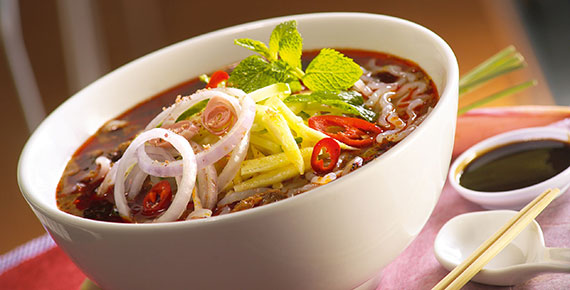
Source: Merlin Hotel Penang
It should not come as a surprise that Penang is first on the list – Penang, long known as the ‘Food Paradise Of Asia’, is renowned for its fabulous and exotic mix of delicious cuisine to choose from. Penang is proudly recognized on numerous ‘top culinary destination’ lists, nowhere in Asia can compete with Penang when it comes to street food. Penang food is a mix of traditional Malay, Chinese and Indian dishes, as well as fusion cuisines such as Baba Nyonya, or Peranakan, which incorporates regional ingredients and Chinese and Malay cooking methods.
MUST-EAT:
Char kway teow (flat rice noodles with shrimp, bean sprouts, eggs and sweet Chinese sausage), hokkien mee (egg noodles in a broth with prawns, egg, bean sprouts and water spinach), asam laksa (thick noodles in a spicy fish broth with tangy asam, a sour tamarind paste), nasi kandar (rice served with several different Indian curries, all running into each other on a single plate), Oh-jen (fried oyster omelettes) and Chee cheong fun (rice noodle rolls).
Malacca City
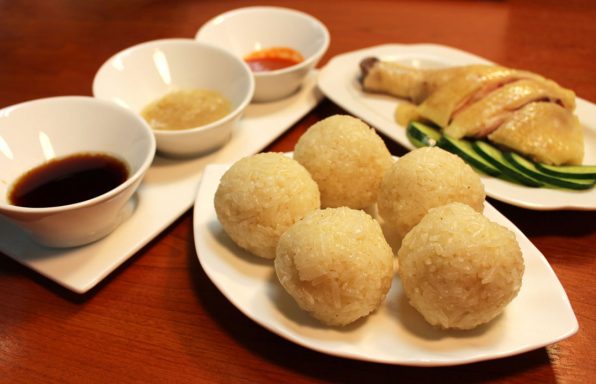
Source: 360 Happy Kitchen
Listed as a UNESCO World Heritage city, Malacca City preens with its array of multicultural heritage buildings, ancient landmarks, colourful rickshaws and colonial structures. Malacca’s food is influenced by a kaleidoscope of cultures, spanning Peranakan, Portuguese, Dutch and British elements. Once a thriving port, the capital of its namesake state is now one of Malaysia’s most well known holiday destinations. It boasts night markets and cafes, dotted with various heritage attractions like the A’Famosa ruins and Jonker Street. Jonker Street, is the heart of Malacca’s Chinatown. During the day, it is a food street where you can try exclusive Malaccan dishes such as Hainanese chicken with rice balls, Peranakan dishes and Cendol. At weekend nights, the area is turned into a walking street called Jonker Walk, where locals and visitors can browse street stalls selling local food, crafts and souvenirs.
MUST-EAT:
Hainanese chicken with rice balls, Nyonya laksa (peranakan style noodles in a spicy broth with tangy asam, served with prawns, fishballs and beancurd skin), satay celup (an assortment of raw and semi-cooked seafood, meat and vegetables on skewers are dunked into a hot boiling pot of satay gravy) and cendol (shaved ice covered with palm sugar, coconut milk, green starched noodles with pandan flavouring and red beans).
Ipoh
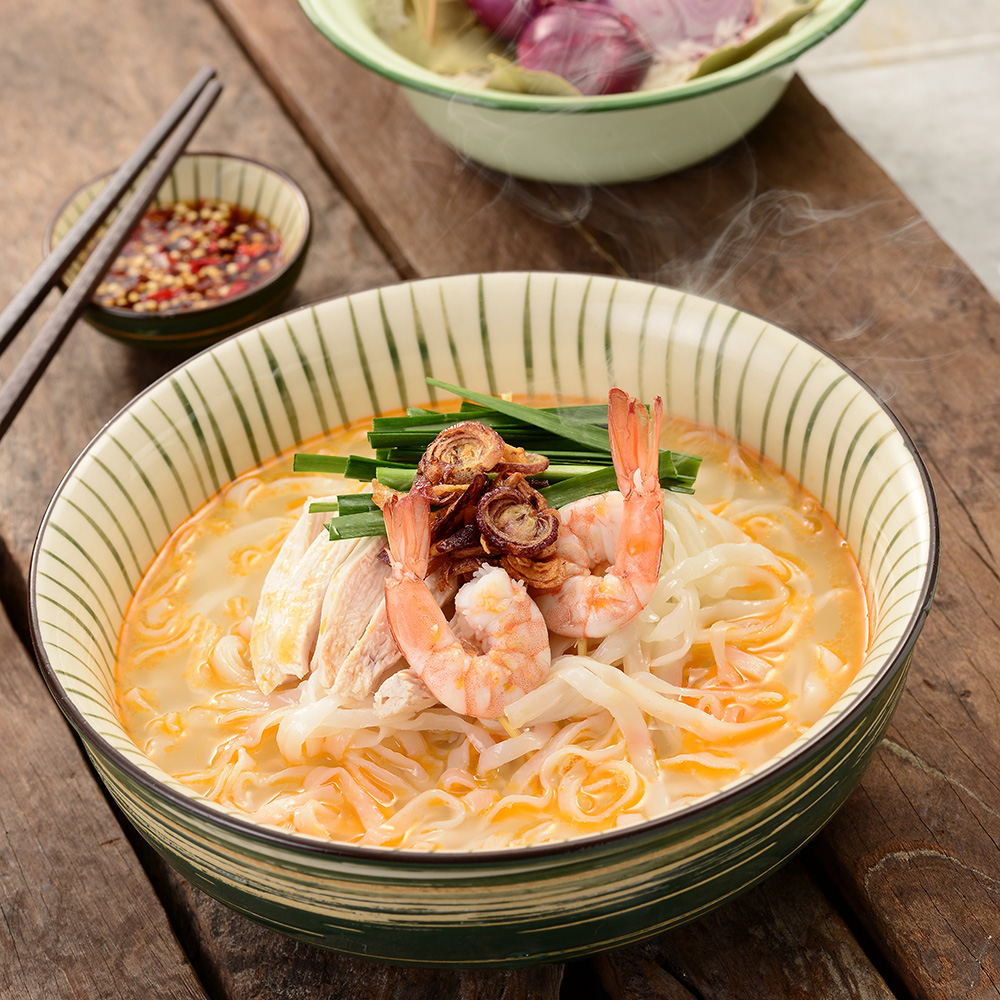
Source: Nam Heong
Though perhaps not as famous as Penang or Malacca when it comes to food, Ipoh certainly measures up impressively – and those in the know come here for some of the city’s most famous eats and treats. With countless restaurants and cafes that line the streets, Ipohites dish up delicious local cuisines that run the gamut from Malay to Indian to Western, with Chinese being the most ubiquitous, albeit with a distinct Cantonese, Hakka and Hainanese influences. Ipohites are proud of their food and claim that their food benefits from being cultivated and cooked using the spring water that issues from the limestone mountains that flank the city, which has a high mineral content that imparts a special vitality. From the arty revival of the Sekeping Kong Heng to the Concubine Lane, Ipoh is certainly a place not to be missed by foodie traveller.
MUST-EAT:
Nga choy kai (bean sprout chicken rice), kai see hor fun (flat rice noodles served with shredded chicken, chopped spring onions, boiled shrimps and garnished with chopped red chillies and fried shallots), freshly made Ipoh style chee cheong fun (rice noodle rolls served with a mix of chili and sweet sauce; sprinkled with toasted sesame seeds, and garnished with fried shallots), hor hee (teochew noodle soup served with bits of greens, sliced fish cakes, fish balls and dumplings), morning Dim Sum session, salt-baked chicken, egg tarts, and of course the famous Ipoh white coffee. Also, stock up on Ipoh’s pomelos, reputed to be the world’s best.
Sarawak
Sarawak is, without doubt, where many of Malaysia’s most beautiful natural treasures can be found. But of course for many foodies, natural wonders cannot overshadow the food! Thanks to the countless cultural influences of different tribes and communities contributing to Borneo, now we have a melting pot of different cultures and the thriving food scenes in Sarawak which will have you coming back for more.
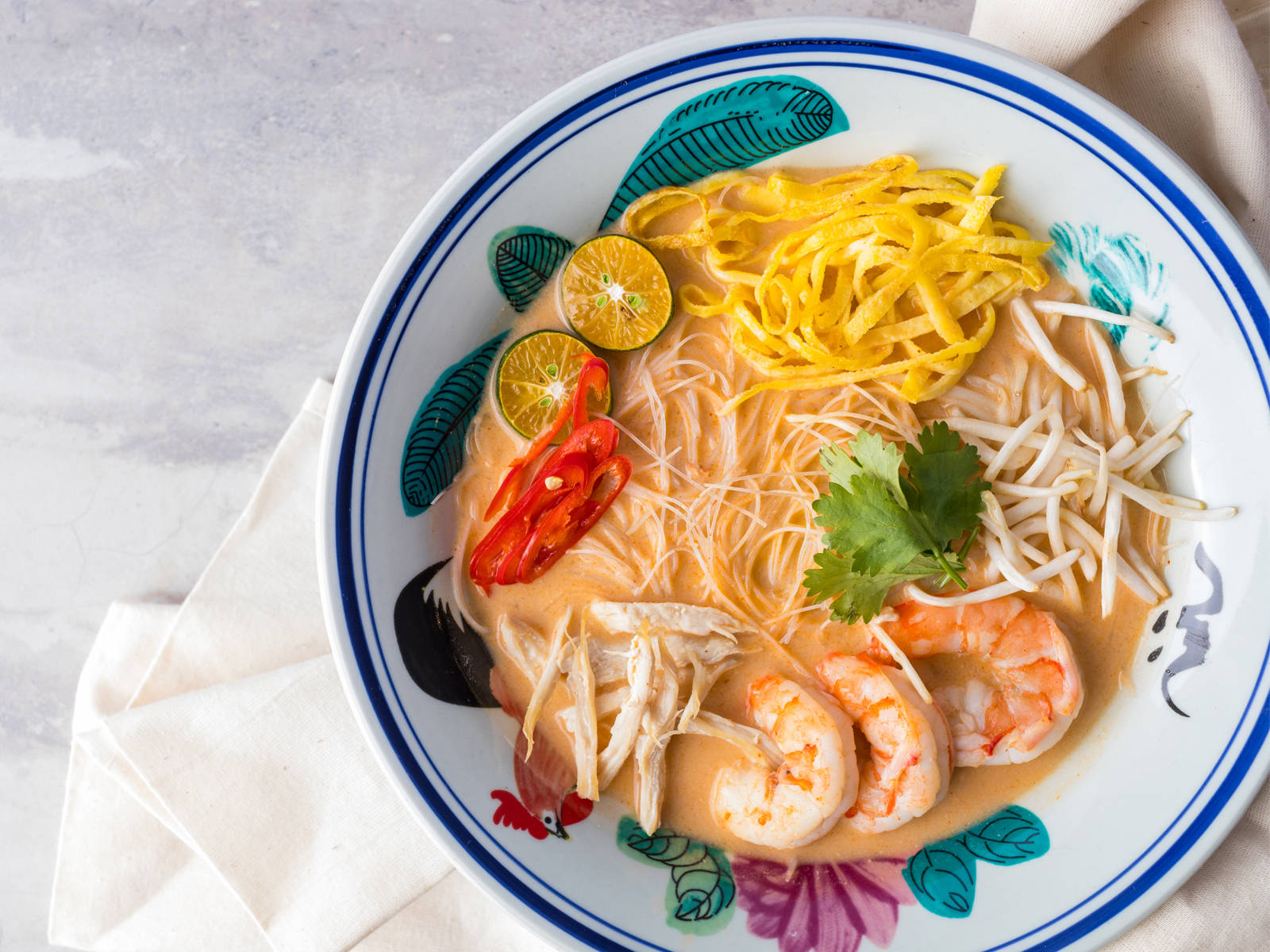
Source - Asian Food Channel
The signature food in Sarawak is unlike any that found in Peninsular Malaysia. From the iconic eponymous Sarawak laksa, best known Kolo Mee to the local specialties like Umai and Pansuh Manuk, there are some unique and wonderful delicacies in this part of Malaysia.
MUST-EAT:
Kolo mee (springy red or yellow egg noodles served with minced meat, fried shallots, spring onions and mushrooms), Sarawak laksa (noodles served with a broth consisting of sambal belacan, tamarind, lemongrass, herbs and spices with a little coconut milk), Umai (a raw fish dish similar to ceviche, filleted and sliced raw fish marinated in a mixture of local gingers, onions, chillies and lime juice), Pansuh Manuk (chicken marinated with ginger, lemongrass, cassava leaves, pepper and a local ginger called tepus, then cooked in bamboo).
Kuala Lumpur
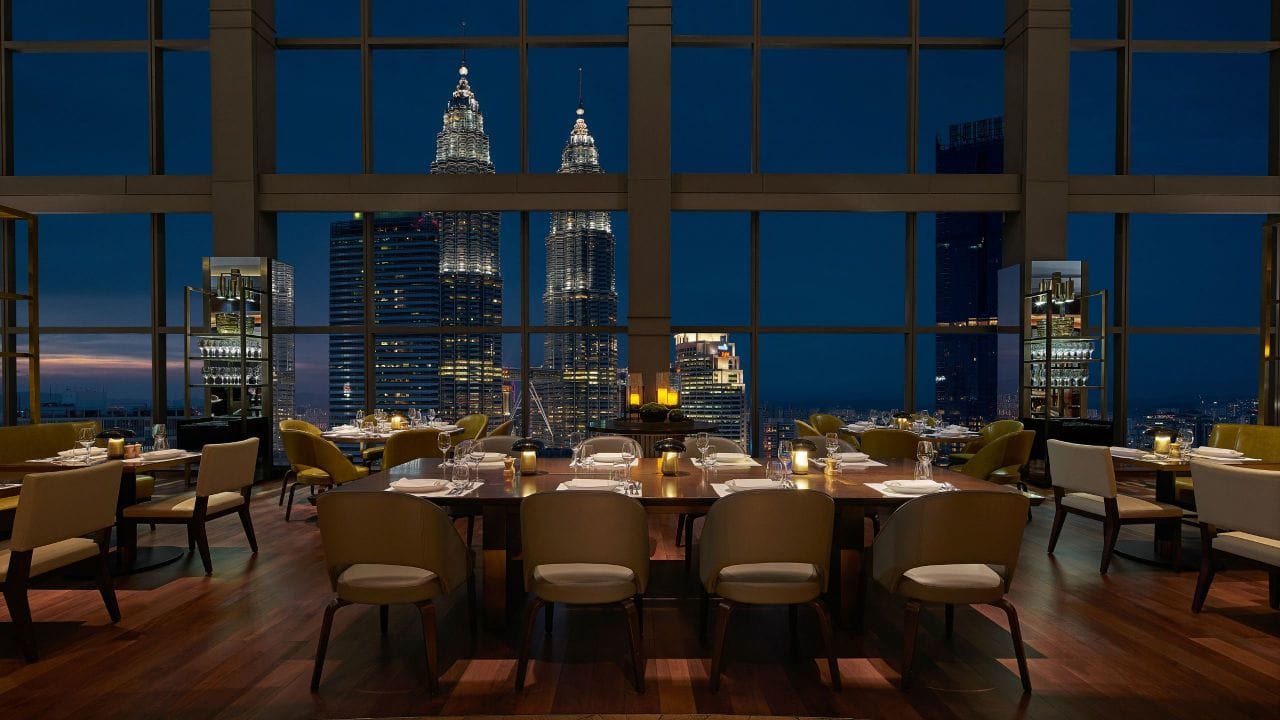
Source: Grand Hyatt Kuala Lumpur
No shortlist of food places would be complete without the inclusion of Kuala Lumpur. Kuala Lumpur is the capital of Malaysia, so it's no surprise that so many cultures are represented here as it's so easy to assimilate and meet in the centre of the country. The best part about Kuala Lumpur is that you have high end dining, but also more humble eateries, where locals have traditionally gone for their everyday meals.
Malaysia's capital city is a melting pot of culinary diversity, offers an immense array of cuisines, ranging from ranging from Little India with its penetrating scent of curry to Chinatown with its street vendors and dazzling night market – it is impossible not to eat well in Kuala Lumpur. The mouth-watering culinary delights, the radiance and the whole ambience promote an unforgettable travel experience for foodies in Kuala Lumpur.
MUST-EAT:
Kuala Lumpur has it all. Whether you prefer a posh high-class Michelin star restaurant, a restaurant with fantastic views of the Kuala Lumpur city skyline or street stalls selling freshly cooked local delights at a low price, there’s definitely a place that can satisfy your taste buds.
___
Start your food trails today by getting your air ticket and hotel bundle package at Mayflower.com.my ! Also, follow Mayflower’s Facebook page NOW for the latest travel deals!